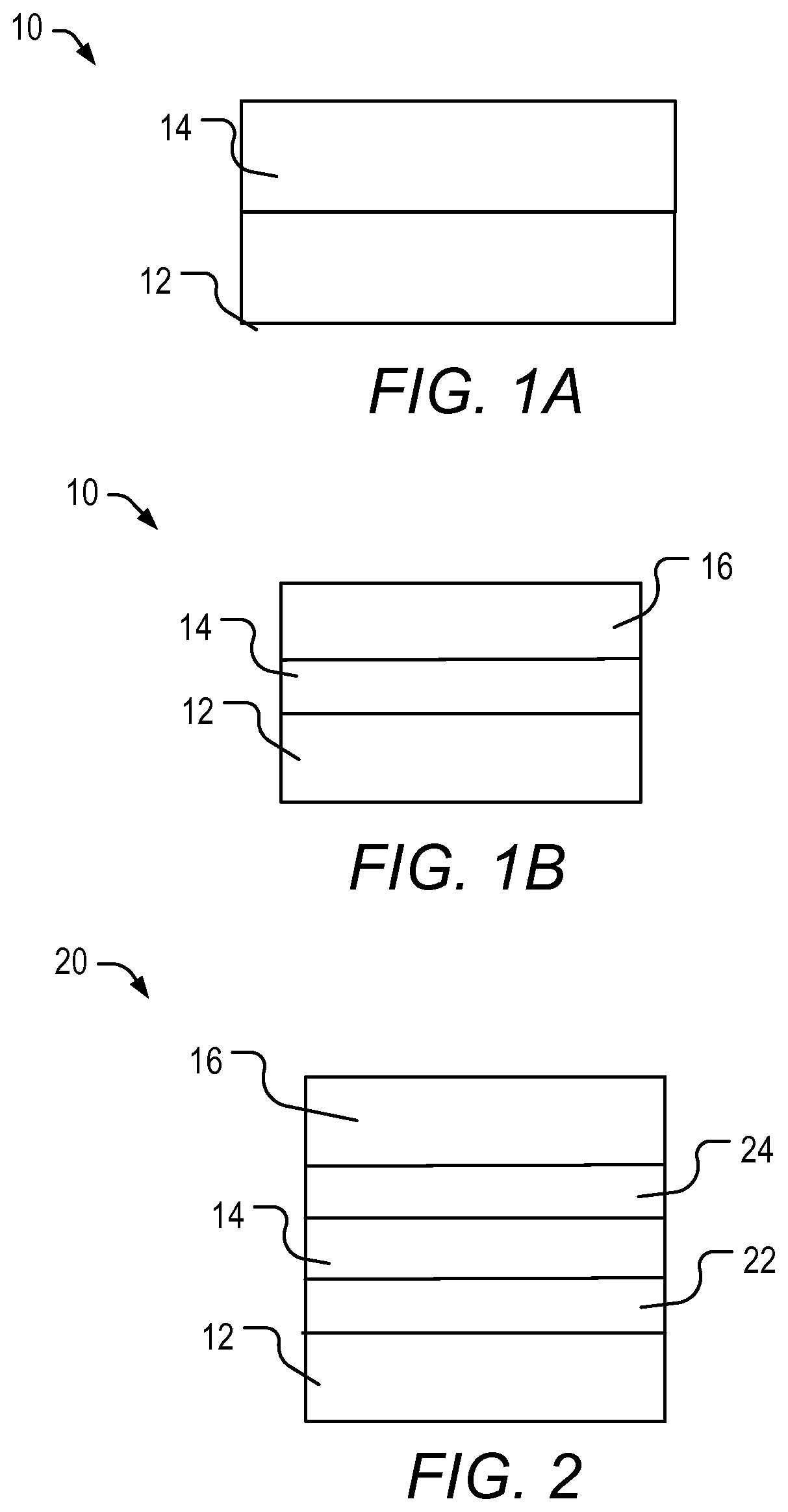Polyolefin based multilayer film with a hybrid barrier layer
a polyolefin-based, hybrid technology, applied in the direction of packaging foodstuffs, packaged goods types, synthetic resin-layered products, etc., can solve the problems of affecting commercial use, affecting the performance of low-otr polymers (evoh, pvoh), and often exposed to high humidity conditions, so as to achieve low oxygen transmission rate (otr), sufficient adhesion properties, and cost-effective
- Summary
- Abstract
- Description
- Claims
- Application Information
AI Technical Summary
Benefits of technology
Problems solved by technology
Method used
Image
Examples
example 1
Melt Blending of EVOH and Silane
[0120]EVOH used is EVAL™ G156B received from Kuraray. EVAL G156B contains 48% of ethylene and has a MFR value of ˜6.4 g / 10 min at 190° C. with 2.16 Kg load, a density of 1.12×103 Kg / m3, a glass transition temperature of 50° C. and a melting temperature of 157° C.). The silane used is dimethoxymethyloctylsilane (CAS No. 85712-15-8) received from Sigma-Aldrich and is in liquid form and used as received without any purification. Required ratio of EVOH (dried at 120° C. for 12 hours) and silane are weighed and physically blended with a mixture of powdered and pellets of EVOH in a plastic bag. Feed ratio of EVOH to silane was 95:5. The mixture was subsequently fed into a twin screw extruder (Coprion ZSK 25) equipped with 10 barrels which were maintained at the temperatures listed in Table 1. The other processing conditions were screw speed of 250 RPM and feed-rate of 6.5 Kg / h. The torque observed while melt extruding neat EVOH and a mixture of EVOH and sil...
example 2
Compression Molding of the Melt Blended EVOH and Silane
[0121]The melt blended EVOH and silane of Example 1 was made into a thin film using compression molding. The molding platen (both upper and bottom) temperature was 210° C., holding pressure was about 80 bar (8.0 MPa), holding time was 5 minutes, and cooling time was 5 minutes. The produced film had an average thickness of 200 microns.
example 3
Characterization of Melt Blended EVOH and Silane
[0122]The film of Example 2 was analyzed and tested, with the results shown in items (i) through (ix).[0123](i) Compositional analyses: the composition was inferred by NMR (Nuclear Magnetic Resonance) spectral analyses of cut piece of compression molded film (10 mg) dissolved in DMSO-d6. Modified EVOH compositions containing 1, 3, 5 and 10 weight percentages of alkyl silane were made.[0124](ii) TGA (Thermogravimetric analyses, heating rate: 20° C. / min, atmosphere: air / nitrogen; method: ASTM E1131), as % weight loss at 220° C.[0125](iii) MFR (melt flow rate, load: 2.16 Kg, temperature: 190° C., dwell time: 300 sec, method: ISO1133-1)[0126](iv) WCA (water contact angle, sessile drop technique, instrument: KRUS drop shape analyzer DSA-100S)[0127](v) OTR (oxygen transmission rate, thickness: about 200 micron; temperature: 23° C.; permeant concentration: 100%; relative humidity: 0%; area of sample exposed: 5 cm2)[0128](vi) Humidity exposure...
PUM
| Property | Measurement | Unit |
|---|---|---|
| thickness | aaaaa | aaaaa |
| thickness | aaaaa | aaaaa |
| thickness | aaaaa | aaaaa |
Abstract
Description
Claims
Application Information
 Login to View More
Login to View More - R&D
- Intellectual Property
- Life Sciences
- Materials
- Tech Scout
- Unparalleled Data Quality
- Higher Quality Content
- 60% Fewer Hallucinations
Browse by: Latest US Patents, China's latest patents, Technical Efficacy Thesaurus, Application Domain, Technology Topic, Popular Technical Reports.
© 2025 PatSnap. All rights reserved.Legal|Privacy policy|Modern Slavery Act Transparency Statement|Sitemap|About US| Contact US: help@patsnap.com


